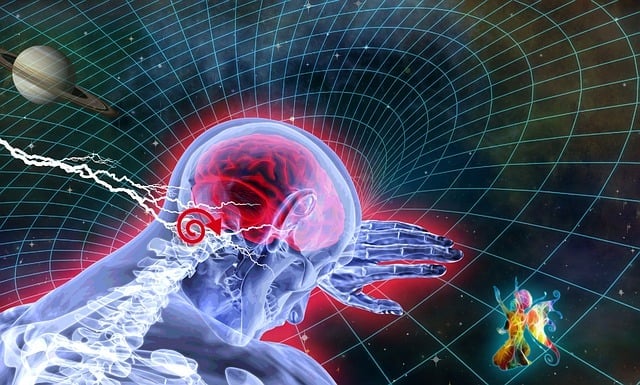A study Led by the UAB and the CREAF shows that the loss of nitrogen from Arctic soil not only deprives plants of a vital nutrient but also contributes, proportionally and irreversibly, to increased CO2 emissions. The study was conducted in subarctic grasslands in Iceland, at a site where natural geothermal gradients simulate the effects soil warming will have on the planet's coldest ecosystems. A new sampling expedition is planned for this summer.

Half of the world's carbon is stored in the frozen soils of the Arctic and subarctic regions, covering territories such as Greenland, Canada, Alaska, Scandinavia and Iceland. Scientists were already aware that the microorganisms living in these ecosystems have become more active because of rising temperatures, consuming more carbon and releasing it into the atmosphere as carbon dioxide (CO₂). However, a study published recently in the journal Global Change Biology, led by CREAF and Universitat Autònoma de Barcelona (UAB) researcher Sara Marañón, has revealed that warming also depletes nitrogen in soils. Nitrogen is an essential nutrient for plants: without enough of it, they grow less, absorb less CO₂, and are unable to offset carbon emissions from the soil, leading to an unforeseen, irreversible increase in the overall balance. Specifically, for every degree Celsius of warming, between 1.7% and 2.6% of the nitrogen in soil is lost, resulting, according to the study's data, in a proportional loss of carbon (in the form of CO₂) into the atmosphere. The team behind the study made this discovery through a decade-long experiment conducted in Iceland, a natural laboratory where geothermal activity produces soil temperatures ranging from 0.5°C to 40°C above ambient temperature, allowing direct observation of how heat affects high-latitude soils.
«We already knew that climate change was causing Arctic soils to release more CO₂, but we thought at least some of the emissions would be offset by plant growth, which increases slightly with warming,» says Marañón. «But our study shows that isn't the case. Nitrogen is lost and soil fertility decreases, preventing Arctic ecosystems from offsetting microbial CO₂ emissions.»
Under normal circumstances, Marañón explains, microorganisms are more active in spring and summer. They consume nitrogen and transform it into ammonium and nitrates, compounds that plants take up for nourishment. But warming affects the synchrony of the process: the microorganisms become active in winter, when plants are still inactive due to a lack of light and do not yet need the nutrients the microorganisms provide, resulting in supply outpacing demand. The upshot is that the transformed nitrogen goes unused and is lost. Some of it may filter into groundwater as nitrates, and can contaminate aquatic systems; another part of it may be released as nitrous oxide (N₂O), a greenhouse gas nearly 300 times more potent than CO₂. This, warns Marañón, is «a dangerous cocktail».
Additionally, the team found that higher temperatures diminish soil's capacity to retain nitrogen. One factor in this is that warming reduces not only the quantity and size of microorganisms but also the quantity of fine roots — natural nitrogen stores — so there are «fewer and fewer reserves available», as Marañón notes. The study's results show that the greatest nitrogen losses occur during the snowmelt period, when the soil's natural store of the element is fullest but plants have yet to grow enough to absorb it.
Iceland: a natural laboratory
The study involved taking samples from an area of subarctic grassland in southwest Iceland, near the village of Hveragerði, where an earthquake in 2008 produced natural geothermal gradients that heat the soil to varying temperatures without altering other factors (e.g. light, soil minerals, rainfall, wind, etc.). This special trait makes the location an ideal natural laboratory for conducting research on how soil warming will affect the planet's cold ecosystems.
To better understand where and when nitrogen loss occurs, the team used algal amino acids labelled with a heavy isotope of nitrogen (nitrogen-15) that acts as a tracer, making it possible to track the nutrient's path through the ecosystem. They injected the amino acid mixture into the soil and, weeks later, analysed the distribution of the isotope in a range of components (aboveground vegetation, leaf litter, coarse roots and rhizomes, fine roots, microbial biomass, and the soil itself) along temperature gradients. They measured the various parameters involved on four dates, under contrasting seasonal conditions.
The team is organizing a new sampling expedition in August to continue investigating how climate change affects high-latitude soils as part of the SOCRATES project.
Led by CREAF and the UAB, the study also involved CREAF-based CSIC researcher Josep Peñuelas, as well as researchers from international institutions including the University of Vienna, the University of Antwerp, and the Agricultural University of Iceland.
Article: Marañón-Jiménez, S., Luo, X., Richter, A., Gündler, P., Fuchslueger, L., Verbrigghe, N., Poeplau, C., Sigurdsson, B. D., Janssens, I., & Peñuelas, J. (2025). Warming weakens soil nitrogen stabilization pathways driving proportional carbon losses in subarctic ecosystems. Global Change Biology. DOI: https://doi.org/10.1111/gcb.70309






